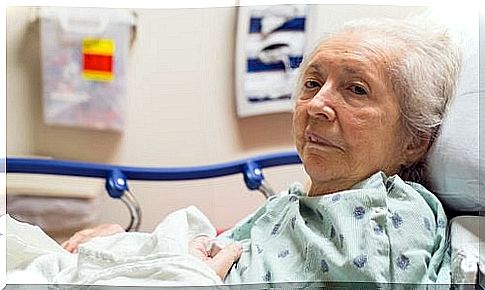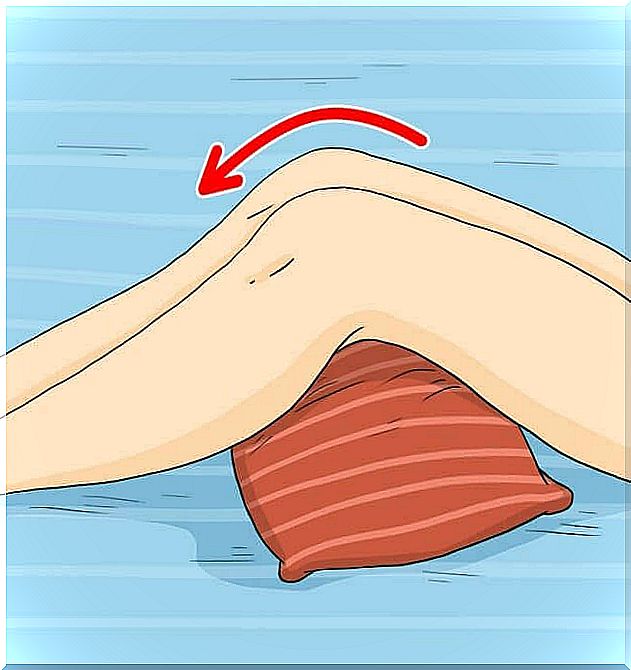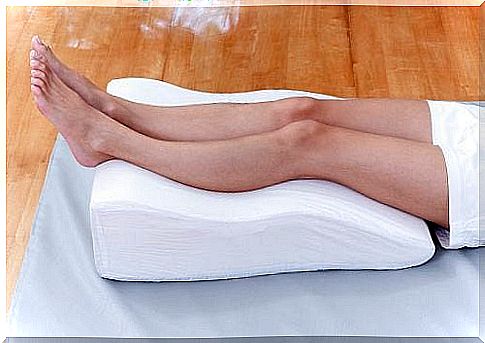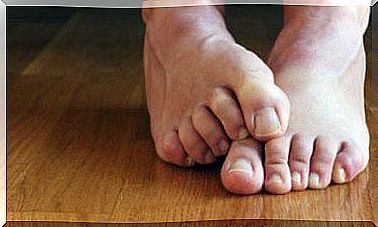How To Avoid And Treat Bed Sores
Bed sores usually occur when a person spends a long time lying down due to illness or age. The skin is put under great pressure, and in certain areas the skin may first redden, then get into cracks and, as a result, form an ulcer.
To prevent and treat bed sores effectively, we recommend that you read this article.
What are bed sores?
Patients who have to lie down for long periods of time tend to suffer from bed sores, also called “pressure ulcers.” These wounds can be very painful and can continue the patient’s inability to move.
Bed sores occur from pressure exerted by the bones against a mattress or pillow.
The skin is between the bones and the mattress, and ends up being without a source of blood, causing necrosis. It can also be the result of moisture in the area if a person suffers from urinary retention problems.
Rubbing the sacrum together with the pressure of lying down is not a good combination.

These ulcers are sorted according to how many layers of skin they affect. They go from redness to affecting the bones.
Bed sores can cause inflammation and a lot of suffering as they get worse if the person does not change position.
Risk factors that increase the formation of bed sores include:
- Old age
- Full immobility
- Urinary retention problems or lack of bladder control
- Malnutrition or dehydration
- Diseases that take a long time to heal
- Mental health problems (dementia, confusion, Alzheimer’s disease)
- Use of sedatives
How to prevent bed sores
This problem is very common among elderly patients, so both caregivers and relatives should pay attention to prevent them from appearing and developing.
Here are some tips to avoid bed sores:
1. Change position every 2-3 hours
Depending on the patient’s abilities, it is necessary to turn them around so that the blood circulates so that the skin is not always under pressure at the same point.
For example, pads can be used to turn your back left or right.
2. Examine sensitive areas
There are areas of the body where bed sores are more common: ankles, hips, sacrum, knees, ears and shoulders.
If there is redness in the area, it is important to treat it immediately to prevent the ulcer from developing.
3. Maintain body hygiene
Even if a person is lying down all the time, he or she will still sweat and become dirty. A full daily wash or shower is essential to reduce the risk of bed sores.
- Always use unscented soap and do not rub.
- Drying is also important as moisture accelerates the redness process.
4. Reduce pressure points

By using pillows or special equipment found in pharmacies and aid stores, it is possible to avoid putting pressure on certain areas on a mattress, sofa or wheelchair.
- For example, when the legs are pressed together, a pillow can be placed between the knees.
- There are small pillows as well as other tools that can handle this operation.
5. Feed and hydrate the patient
A balanced diet based on the needs of the patient is essential to improve his health and provide all the nutrients he needs.
In addition to water, tea and soup, jelly is recommended to increase the amount of fluids ingested.
6. Avoid pressure on the ankles

The pillow can be placed under the calves to keep your feet hanging, always making sure the sheets and blankets don’t pinch your toes.
At this end, leave the bedding as loose as possible.
7. Massage
Massage two or three times a day is very important to improve blood circulation and prevent muscle swelling. It is recommended to use special fats and creams.
Never rub bony bulges as it may put more pressure on the fine layer of skin that covers them.
8. Change clothes and sheets
Check that the clothes the patient is wearing are in good condition.
- They should not be very tight or very loose, as the former does not allow the skin to breathe and the latter can roll and put pressure on certain areas.
- Clothing should not have buttons, zippers or thick seams.
- As for the sheets, it is very important to change them from time to time, especially to avoid moisture and dirt.
9. Move
If the patient is unable to move on their own, the person in charge should help them move their legs, arms, neck, etc.
These movements improve blood circulation.
Treat bed sores naturally
Only mild cases should be treated at home. Some that might help are:
1. Aloe Vera

You can buy it as a cream or cut the stem from a fresh plant and isolate the gel inside.
Aloe Vera cools the skin, increases blood circulation, prevents inflammation and provides immediate relief.
2. Magnesium milk
This can be found in health food stores and helps reduce redness and swelling. It should be applied with a cotton swab three times a day.
3. Honey
Thanks to its antibacterial properties, honey helps when an ulcer is newly formed. It also moisturizes the skin. Apply a little honey to the ulcer and cover with a patch.
Take the tips in this article to help treat bedridden patients, and prevent bed sores effectively!









